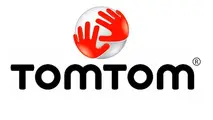TomTom and Cisco to develop new traffic information service for future mobility systems

TomTom, in cooperation with Cisco, is developing ultra-fast lane-level traffic technology that will support future transportation networks including autonomous driving and smarter mobility systems.
The partnership is conducting research to make use of roadside data captured by Cisco’s array of sensors, routers and controllers, to create the next generation of traffic information technology. The research combines Cisco’s data with TomTom’s traffic fusion technology and expertise, supported by Cisco’s Internet of Things (IoT) platform.
One particularly innovative aspect of this cooperation is the use of distributed acoustic sensing (DAS) technology, which has the ability to convert a fiber optic cable into an array of virtual microphones that detect and measure vehicle movements. This data is to be merged with TomTom’s pool of floating car data from over 500 million devices. It will then be displayed and analyzed in a TomTom interface specifically designed for the needs of traffic management centers (TMCs).
This research and development is expected to reduce latency and increase the accuracy of real-time traffic services, while reducing the costs of traffic monitoring infrastructure. As an example, DAS technology promises to be significantly cheaper to set up and maintain than traditional inductive loop sensors. This project aims to develop better products supporting the demanding requirements of autonomous driving, where cars need to know what lies beyond their sensors, in real time and on each lane.
Edwin Paalvast, president of the EMEA region at Cisco, noted, “With this project, we are connecting road infrastructure, vehicles, drivers and road authorities, enabling them to exchange information in near real time. That is what the Internet of Things (IoT) is about. With TomTom’s expertise, its gigantic pool of traffic data, and innovative traffic technology, TomTom is a strong company to work with in this field.”
Anders Truelsen, managing director of TomTom’s licensing business, commented, “We strongly believe that Internet of Things and cloud technologies are essential parts to the future of mobility, and we are excited to work with Cisco in moving traffic technology forward.”
TomTom has also announced that it has joined forces with the Chinese internet services company Baidu to develop high definition (HD) maps for autonomous driving. Their collaboration on the development of a unified global HD map service combines TomTom and Baidu’s expertise in HD map-making and artificial intelligence (AI). Baidu will make use of TomTom’s Real-Time Map Platform to improve HD map-related technologies used in China, including its Apollo open-source autonomous driving platform.



